AudioCulture
The noisy library of New Zealand music
Te pātaka korihi o ngā puoro o Aotearoa
The Fair Sect
During their six years together (1965-1971) The Fair Sect released four singles on four separate labels. Their career reflects a lack of continuity, compounded by the pressure of relationships and day jobs clashing with constant gigs and rehearsals.
The Fair Sect story starts in 1963 with Linda Williams, who was teaching herself guitar in her upstairs bedroom in Ponsonby’s Pompallier Terrace. Meanwhile, in the basement of the family house, big brother John Williams was rehearsing almost daily in the up-and-coming schoolboy group The Rebels, who would soon add vocalist Larry Morris and evolve into Larry’s Rebels.
By 1964 Linda had become proficient enough on guitar to start playing with like-minded musicians and purchased a white 1964 Fender Stratocaster from the Australian-bound Max Merritt.
It was during a taxi ride home from school with some of her friends that Linda was talking guitars and music. The taxi driver mentioned that his daughter Faye also played guitar, and asked if Linda would like to meet her. A resounding “YES” from Linda saw phone numbers being swapped and the next day Linda received a call from Faye Reid.
Linda recalls, “Faye had unsuccessfully tried to form an all-female group at her school. We met up and, as we both played guitar, we started playing Shadows tunes, ‘Dr No’, and other popular instrumentals from the time. Our first gig together as a duo was at the Pt Chevalier RSA. Shortly after that gig we saw an ad in the paper for girls interested in forming an all girl band.”
The ad was placed by school friends Norma Stacey and Val Tapene who, respectively, played drums and bass. As a bonus, Norma could sing, which turned out to be just perfect for guitarists Linda and Faye. Rehearsals began in earnest, first in the garage of Val’s mother and, later, at Linda’s parents’ basement. (The Fair Sect’s gear would be lined up at one end of the room with Larry’s Rebels’ gear at the other end.)
“We all had day jobs,” says Linda, “mine was as a bank teller while Faye worked in the fledging computer industry. There were one or two boyfriends but nothing got in the way of the band for any of us really.”
Faye: “I was at school when we first started, and played and rehearsed so much that I would fall asleep in class. To the point where the headmistress told me as a 13-year-old to ‘leave my orchestra’ as she sarcastically called it – or she would ‘have to expel me’. I quit school when I turned 14. For me it was a one-world passion, and as soon as I saw Ray Columbus & The Invaders perform ‘She’s A Mod’ I knew music would be my calling. I also had fantastic parents who supported me and a father who was a cab driver and chauffeured me to gigs. It was also handy that he was the publican of the Gluepot in Ponsonby.”
For a short period the group was called “The Fair Sex” before bending to the conservatism of the day. The group performed its first gig at the newly opened Pasadena club in the Pt Chevalier RSA on 6 November 1965. During these early years the group’s universe revolved around Ponsonby. Faye’s father arranged a few gigs at the Gluepot and, in exchange for hairdressing, they played several times in the window of the local hairdresser. “It was a squeeze, to say the least,” Linda recalls. Local promotions also saw them play on Ponsonby Road on a flat-decked truck, usually on a Saturday morning.
“We created a lot of interest because we were girls playing instruments: almost unheard of.” – Linda Williams
Linda: “We created a lot of interest because we were girls playing instruments – whhaaatt, almost unheard of. Despite that, we all just went full steam ahead into whatever might happen and [decided to] ‘worry about it later’. Basically we were regarded as a novelty just starting out, and for some time after we were learning everything: learning to play, to play together, what to play, what to wear, we had to learn and do everything ourselves.
“We did have some input and help as we progressed, mostly from friends, family and a handful of people in the business but it really was just us in the early days until Nick Villard offered us a residency at his inner-city club The Embers. Nick became an absolute tower of strength in his support and mentorship for us as a group.”
Val Tapene became pregnant and left the band in mid-1966; she was replaced by guitarist Yvonne Gray. A slight reshuffle took place which saw Faye switch from guitar to bass.
The Fair Sect came to the attention of Gary Daverne of Viscount Records during his tenure as the manager at the Galaxie nightclub, where the group performed during 1966. Gary offered to record the group for his Viscount label in late 1966. He chose American folk group The Kimberlys’ debut single ‘Kimberly’ from 1962 and a beat version of Little Anthony and The Imperials’ big soul ballad ‘Never Again’ as the B-side. Shortly after the single’s release, Daverne left for the UK with his brother Wayne to further their musical careers, which brought about the premature end of his Viscount label. When spoken to recently, Daverne confirmed that he thought highly of The Fair Sect, and would have definitely continued recording the group had he stayed in New Zealand.
The girls auditioned for Kevan Moore’s new weekly pop-music TV show C’mon during March/April 1967. Moore was under pressure to fill guest artist slots at the time, after an exodus of many of the country's top bands and performers leaving to work overseas; also, a planned roster of Australian artists and bands to appear on the show was scuttled by a downturn in the economy. So it was a surprise that Moore turned the group down, instead booking Norma as a solo performer in the show’s “new faces” segment. Norma had, in the past, performed as a soloist in various folk clubs around town when she had spare nights away from The Fair Sect.
Moore can’t remember the reason behind his decision not to feature the group and thinks it may have been because their last single was six months old and there were no plans on the horizon for a follow-up. Norma appeared on C’mon on 6 May 1967 and, while she can’t recall the songs she performed, she remembers the live broadcast well.
“The backing tracks were pre-recorded by [a later line-up of] The Keil Isles for the show, including my drumming parts, so I had to sing live but mime the drumming. Which was fine until I came to the end of one of the songs and Jimmy Hill [the show’s drummer and former member of Ray Columbus & The Invaders] had put in a very technical fill that I wasn’t expecting. As I concentrated on my live vocals, I was thinking ‘WHOA’. I would have looked a sight on live TV with arms flaying around like a one-armed paper hanger trying to cover Jimmy’s fancy fill, and he would have been behind the scenes chuckling away to himself – bless him.”
It was business as usual for the group during 1967 as they maintained their residency at the Embers nightclub, with occasional forays into several other inner-city clubs. Partly out of necessity, Norma decided to forgo her drumming and concentrate on singing. “Earlier on I had taken drum lessons from Frank Gibson but my style of drumming didn’t really suit his style of teaching,” says Norma. “I had a sit-down drum set that was rearranged in a stand-up configuration. I got the idea of standing after seeing Maurice Greer playing with The Four Fours at the Top 20 club one night. Part of my decision to play standing up was because the bulk of our gigs were at the Embers, which had a very low stage, and with me being five-foot nothing and the main vocalist, I had very little option. Plus I started developing leg cramps, so in early 1967 I decided to concentrate on my singing.”
With a shortage of female drummers in the local scene, Ian McIntosh (a male) was recruited.
With a shortage of female drummers in the local scene, Ian McIntosh (a male, from Scotland) was recruited; he had previously been a member of Auckland band The Feet Beats, which included future La De Da’s vocalist/keyboardist Bruce Howard. When they folded, McIntosh joined The Rogues.
“The Rogues had played a couple of gigs with the Fair Sect,” says McIntosh, “and we always got on well with each other. One night, Linda rang me up and explained the situation with Norma and asked if I would like to join them. This was early 1967, and I was between groups, so I figured, why not? I thought that I might come in for a bit of ribbing from some of the guys, which didn’t really transpire because of the respect that the girls had around town. At this stage, we all still had day jobs and were playing three nights a week with occasional gigs out of town.” The group became The Fair Sect Plus One.
Nearly 18 months after their debut single the chance presented itself to record a single for Allied International in late 1967. “Nick Villard had a big collection of records,” says McIntosh, “so we all went through them looking for something suitable. Nino Tempo and April Stevens’ version of ‘I Love How You Love Me’ from 1965, complete with bagpipes, struck a chord with us all and especially me with my Scottish roots.
“We decided to keep the bagpipes in for our version, so I arranged for my brother-in-law, Davie Bryan, who was in the City of Auckland Pipe Band, to play on the session. Obviously, Davie’s part was recorded separately and overdubbed. The B-side was one of our stage favourites, ‘Mohair Sam’, with a few lyrical changes – ‘No Hair Sam’ – ha ha.”
Just before the release of ‘I Love How You Love Me’, McIntosh received a phone call at his work place at Industrial Chemicals, “It was Bruce Howard, my old bandmate and now keyboardist and vocalist in The La De Da’s, asking if I would like to join the La De’s as their drummer. Brett Neilsen was leaving and, with a tour of Australia coming up, they needed to find a replacement fast. I turned him down as by this stage me and Norma had become an item, and I had just bought myself a car on tick.”
‘I Love How You Love Me’ sold well, becoming a turntable hit in many parts of the country and charting on the Auckland and Dunedin charts. McIntosh: “I suppose it was always going to do well in Dunedin, the good ol’ Edinburgh of the South. Sometime in the new year we all received a $5 royalty cheque for the record which equates to $38 in today’s money.”
Up until early 1968, the group had only undergone a few line-up changes, but that was about to change. McIntosh and Norma Stacey decided to leave and get married. He recalls, “Norma and I had been gigging for three-four nights a week for approximately four years, while holding down our day jobs. We were just exhausted and a normal life seemed seemed exotic at the time.”
The pair was replaced by Pat Rewai (vocals) and Gay Aro (drums), while Linda switched from guitar to keyboards.
Not long after McIntosh and Stacey left, the group received an unusual offer.
“We performed alongside the House of Nimrod and Doug Jerebine at the Monaco nightclub in late February 1968,” explains Linda. “The show was promoted as ‘New Zealand’s First Psychedelic Love-In Light Show’ which is where we first met Bryce Peterson, the leader of the House of Nimrod. Fast forward a few months and Bryce, who had just left his own group, approached us with an offer to record a kids’ pop opera that he had written. He thought that the songs were suited more for female vocals and showed us some of the songs. As women we didn’t like the songs, which clearly had hidden drug references, and we didn’t really like him either so we politely declined.” (Presumably these tracks were part of the Spotted Dog album of kids songs that Peterson recorded and released himself in 1972; it also included the LSD-inspired ‘Lady Alice Dee’ which Lew Pryme controversially recorded and released later in the year.)
The group’s third single ‘High Flying Bird’ b/w ‘Big Spender’ was released in mid 1968 with yet another new lead singer, Jenny Parkinson, who had replaced Pat Rewai after her brief tenure in the group. ‘High Flying Bird’ was released on the back of a publicity drive to hopefully gain a nomination as one of the finalists in that year’s Loxene Golden Disc. Like the previous singles it received airplay and a Top 20 entry in Auckland but it attracted very little attention elsewhere around the country.
They may have been called the Swinging Sixties but women were still treated as almost second-class citizens in many areas of society. The Fair Sect were reminded of this reality on 22 October 1968. They were part of a star-studded line-up of 18 local performers as part of the Teen Ball of the Year at the Peter Pan Cabaret in Auckland. Some of the artists appearing that night were The Simple Image, The Fourmyula, Troubled Mind, Allison Durbin, The Hi-Revving Tongues, The Chicks, Shane, The Challenge, Leo De Castro, Tommy Ferguson and Robert Gennari. Perhaps because the event was hosted by NEBOA (National Entertainment and Ballroom Operators Association) it came under the scrutiny of the Musicians Union, who decided to raid the venue for any unpaid union fees.
The Musicians union didn’t allow women members. “what a dilemma.”
Linda recalls: “The union didn’t allow women members and they raided the Peter Pan that night and found we weren’t members – what a dilemma. So the union, in consultation with the promoters, agreed that the promoters would pay the fees for us all to join the union as honorary members for the night – and the next day, we would resign and the promoters would be refunded the joining fees.
Since 1967, when Ian McIntosh joined the group, they had remained a five-piece. During 1969 long-time member Yvonne Gray and Jenny Parkinson left, with Mary Bradfield replacing Parkinson, and the group reverted back to a four-piece. They rounded out 1969 with the release of what would be their final single, the oft-covered song ‘Rattler’ (by Bruce Woodley of The Seekers) on the Zodiac label. It was recorded a year earlier during Pat Rewai’s short spell in the group.
At this stage The Fair Sect had only intermittingly ventured out of Auckland, but 1970 would see the group spending most of the year in the competitive Melbourne scene. The line-up of Linda Williams, Faye Reid, Gay Aro and Mary Bradfield arrived in Melbourne during January, where they came under the A.M.B.O booking agency which handled many of Australia’s top acts of the time.
The group’s first Australian gig was as part of The Moomba Festival in front of an estimated 200,000 plus people. Linda Williams: “My brother John had played at the Moomba with Larry’s Rebels in 1968 and even though he warned us about the emotions that we would experience in playing to such a big crowd it still came as a shock, we were all petrified but managed to get through it without freezing or throwing up.”
The group spent most of the year in Melbourne with regular work at most of the city’s best venues including Berties, Kommotion and the Coliseum, before setting into a residency at the Federal Hotel in the heart of downtown Melbourne.
Linda Williams: “The Melbourne scene was a lot different from Auckland. We were offered a healthy fee by one sleaze-bag club owner to appear topless, which we agreed to. Unbeknownst to him we had plans to teach him a lesson. On the night we wore skin-coloured bathing caps underneath some cheap wigs. During the finale of our last number we took off our wigs to show our bald pates and threw the wigs into a supposedly disappointed full house before getting out of there bloody quick.”
Back in Auckland at year’s end Linda decided to leave, which opened the door for the experienced June Litten to join: “I was called up by Eddie Hegan management and asked to audition for the Fair Sect at the Embers. I originally studied classical piano for 13 years and obtained my ATCL in music and became a piano teacher, privately and at Wesley Methodist College. In 1968 I became a keyboard player for a band called The Travaliers, a five-piece band led by Des Huia. We travelled around the North Island, and backed many of the local big names on the circuit including Ray Columbus, Ray Woolf and Tommy Adderley, etc. Eventually we were joined by Simon Mehana, ex Lou and Simon, and became Simon and the Travaliers.”
Litten was also an up-and-coming songwriter, having co-written the Maria Dallas local No.1 hit ‘Pinnochio’ during the previous year as part of the national TV show Studio One.
The Platters caught the Fair Sect’s act and invited the group to perform with them in Canada.
With Litten on board the group recorded four tracks at Stebbing studio, including her soulful ‘Deep Down’ along with ‘Just One Smile’ and Nilsson’s ‘Without Her’. Unfortunately none of these tracks have been released.
It was during a late-night gig at The Embers one night when The Platters, who were in town performing at a local cabaret and looking for a place to unwind, caught their act and invited the group to perform with them in Canada (Montreal and New Brunswick). Before they left for Canada, Mary left the band and Kaye Gilmore joined.
June Littin describes their Canadian adventure: “We were in Montreal for about three months and were generally well received and considered a bit of a novelty by being an all-female band. We didn’t end up touring with the Platters, but they introduced us to an agent in Montreal, who was to get the gigs for us. I do remember that we were on the billboards as an all-girl group direct from New York! They said that the wording would have a better impact of importance than saying we were from New Zealand. It was a fun time and we had lots of laughs and surrounded by mostly French-speaking people with only our third-form pidgin French to help us out.”
After their Canadian expedition the group headed home. Littin left and was replaced by Kaye Wolfgramm (who was already with the group for the Canadian tour) but the band broke up by the end of the year.
Like most of the ex-members of Fair Sect, Linda Williams would go on to have a long career in music, firstly in 5 Pieces of Silver with brother John, future Hello Sailor bassist Lisle Kinney and multi-instrumentalist Dick Hopp, ex-Headband. When Hopp left, the group changed their name to In Focus and played a blend of standards and jazz.
After leaving the Fair Sect Yvonne replaced Josie Rika in The Blue Souls as vocalist, guitarist and keyboards. Trevor Judge was also in the group and the couple married and when the group broke up in 1971, they formed Topaz which eventually morphed into Noazark who would remain a popular group on the breweries circuit throughout the 70s. Early in their career they held a lucrative residency at the Jolly Farmer Hotel in the southern southern suburb of Drury.
After four years of marriage Ian and Norma got itchy feet and returned to the live music scene, forming Ginger in 1972. They had kept in touch with Yvonne Gray (now Judge) since the Fair Sect days and took over Noazark’s residency at the Jolly Farmer Hotel.
Faye Reid would go to have a long and colourful career throughout the 70s in a host of female bands, and become a stalwart of the Australian female rock scene, first with Linda Williams in the otherwise all-Australian Daughters Of Zeus who spent four years touring Asia, Europe including a six-month residency in Khartoum. Somewhere along the line the group changed its name to Garbo before returning to Australia in 1978.
Faye Reid explained at the time: “We got back to Australia and announced that we were a rock band, as soon as you mention the word rock, you starve and we did.”
Faye then started a new three-piece group called Metro, a short-lived cult band who took the meaning of starvation to a higher level, according to Faye in a 1985 interview.
After the break-up of Metro, Faye quickly put together a new group, The Wait, with the express intention of angling for a recording contract which never materialised despite the popularity of the group. Unperturbed, Faye next assembled another female group, the five-piece Party Girls featuring another New Zealand member, Louise Hughes, on guitar, and lead vocalist Nancy Kiel, who was born in the US but began her musical career in Christchurch. The Party Girls rehearsed for nine days before hitting the road in the early 80s where they became a popular touring band around Australia.
In the same 1985 interview, Faye Reid succinctly encapsulated the plight of female bands around the world up until that point: “I had an absolute ball in all-girl groups. They have a way of getting things done ... everyone pulls their weight. They’re not as serious about problems as guys. The thing that intrigues me most is that there has still never been an all-girl group who can really play and do well commercially. There’ve been a few examples, but they haven’t really cracked it.”
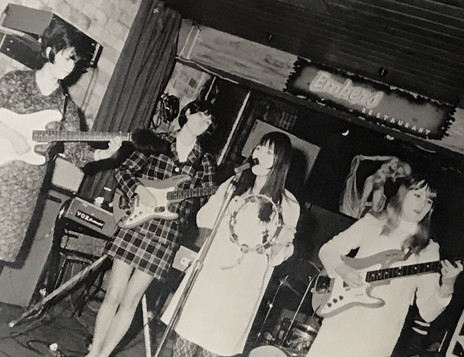
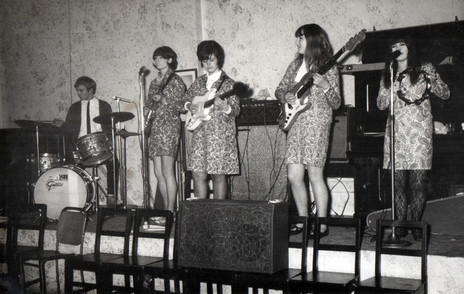
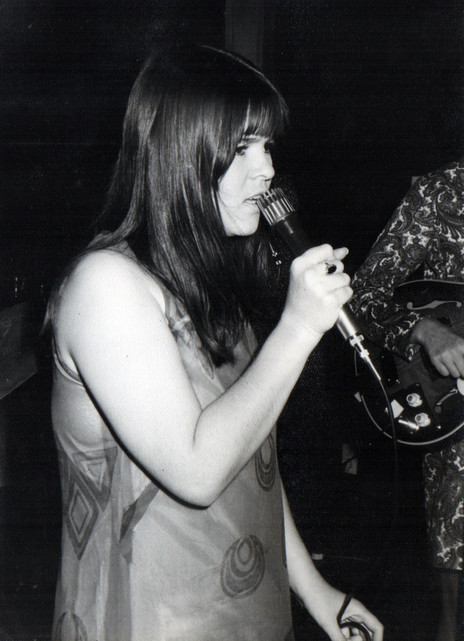
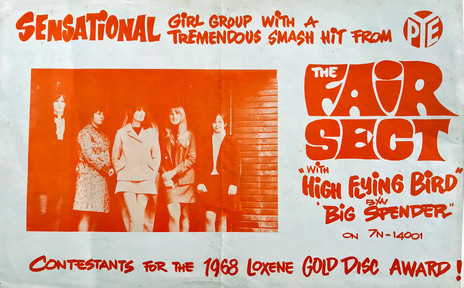
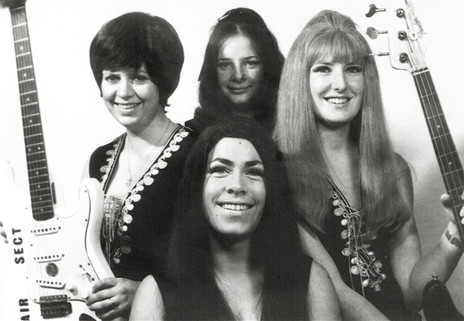
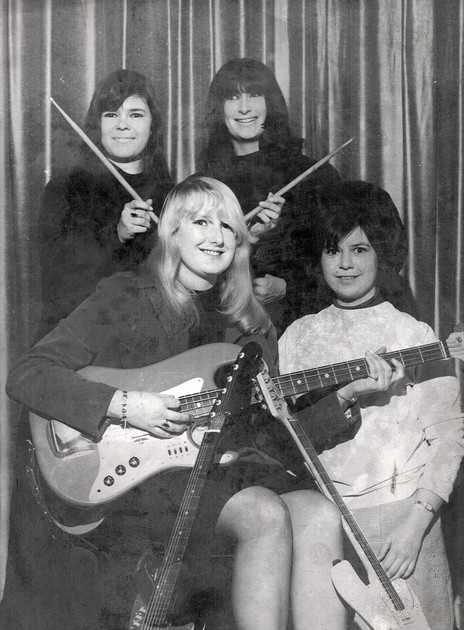
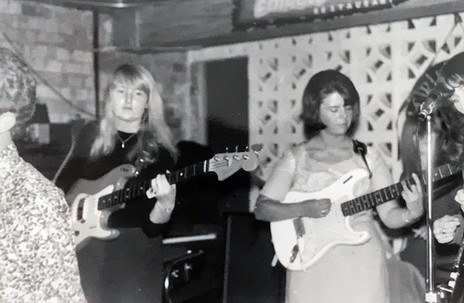
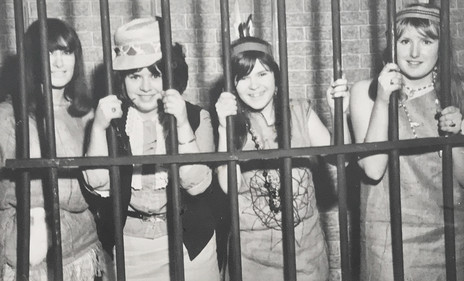
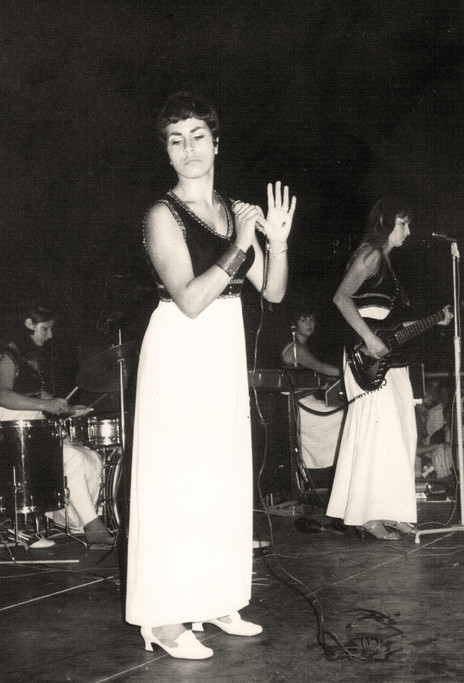
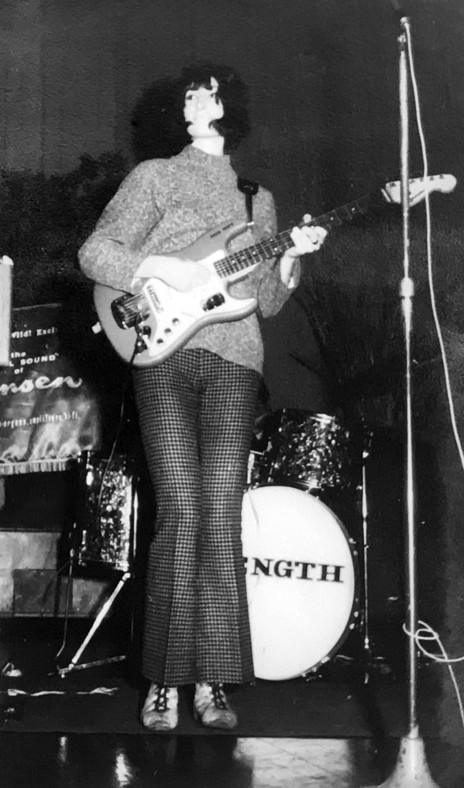
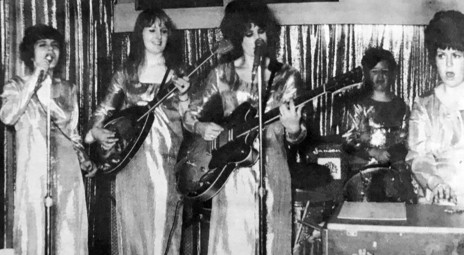
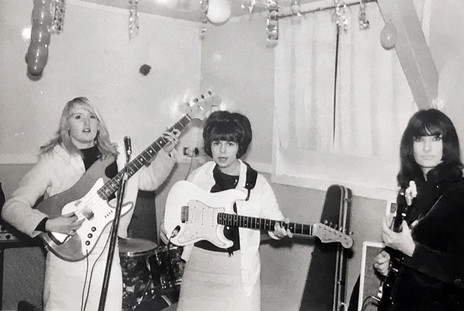
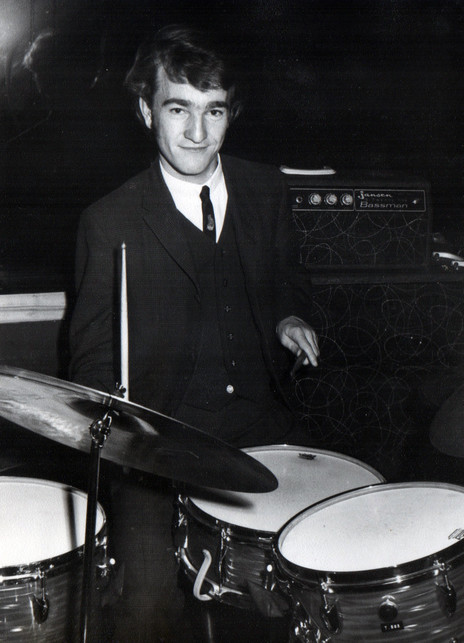
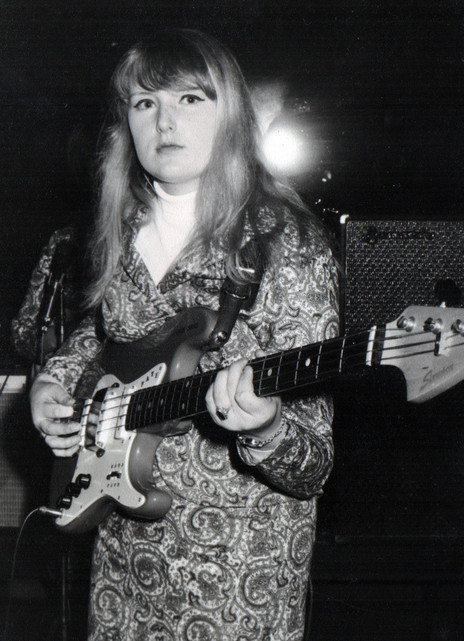
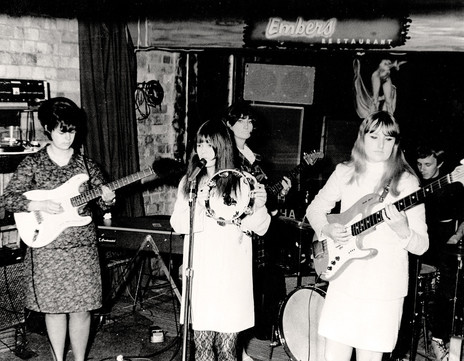
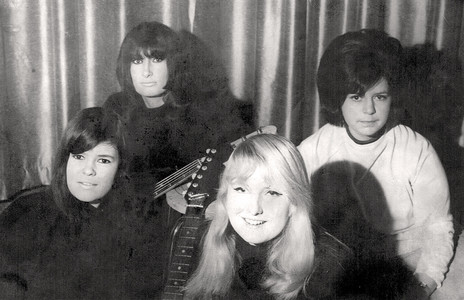
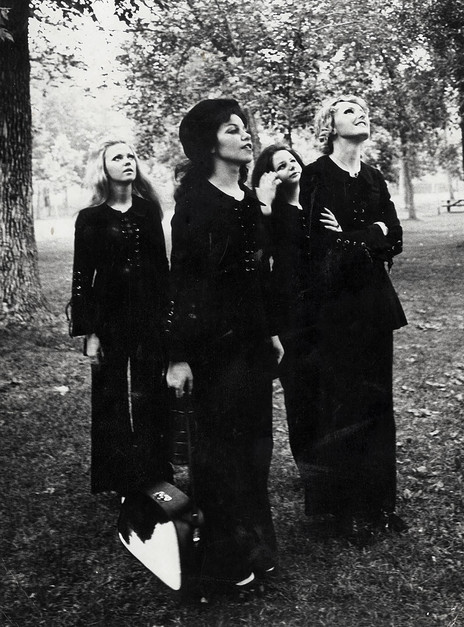
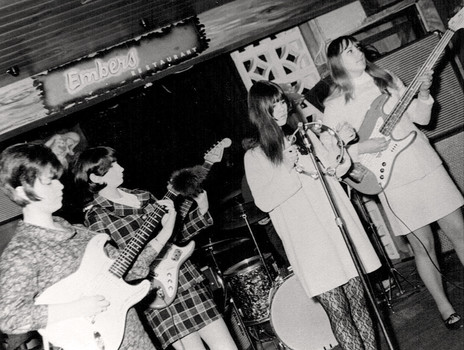
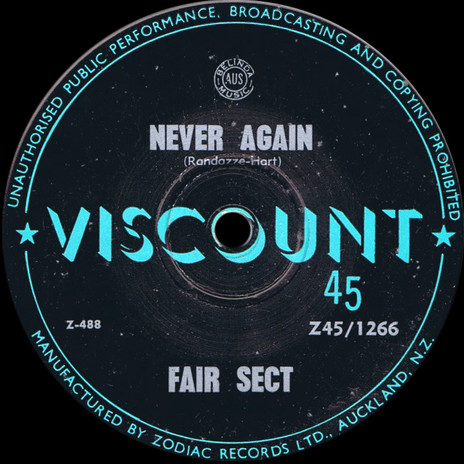
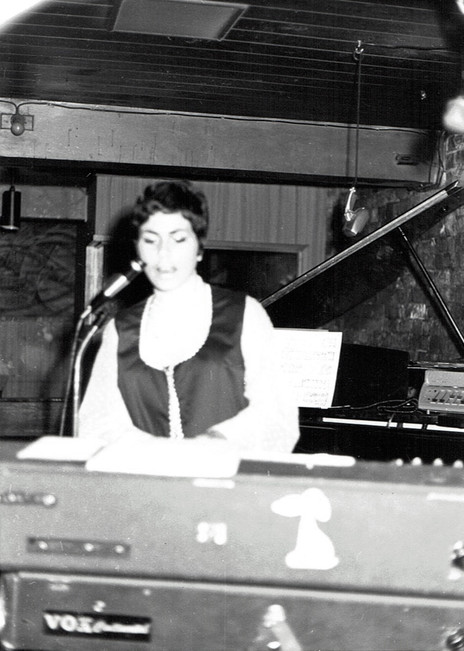
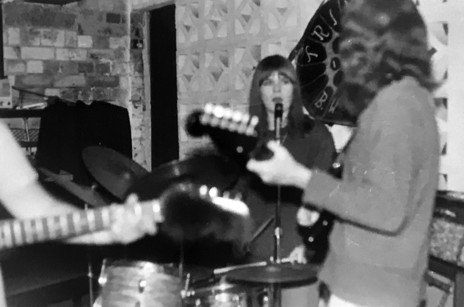
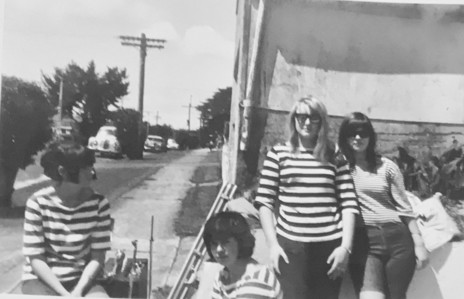
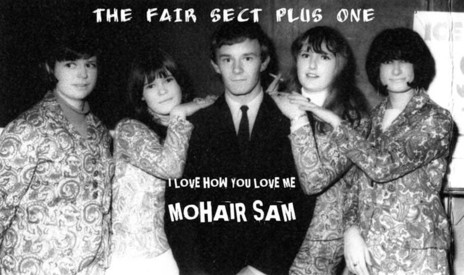
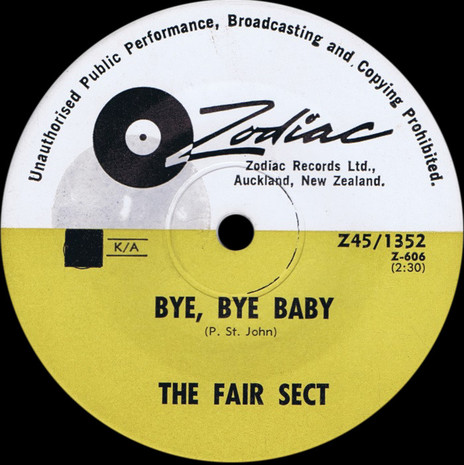
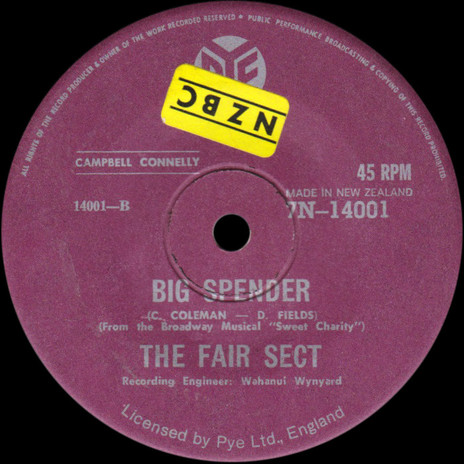
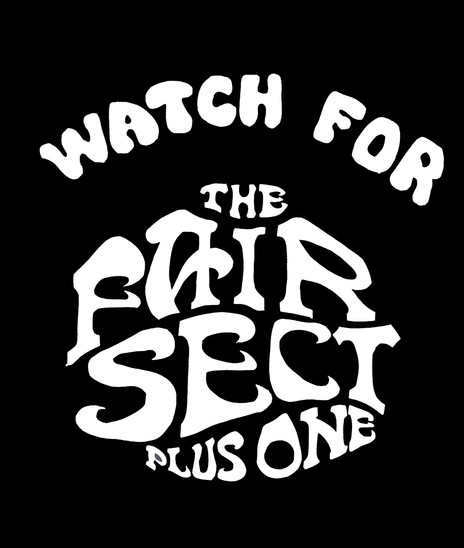
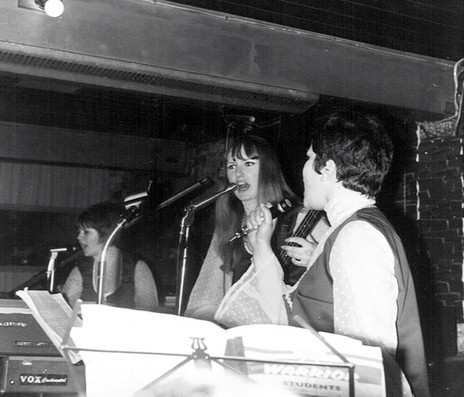
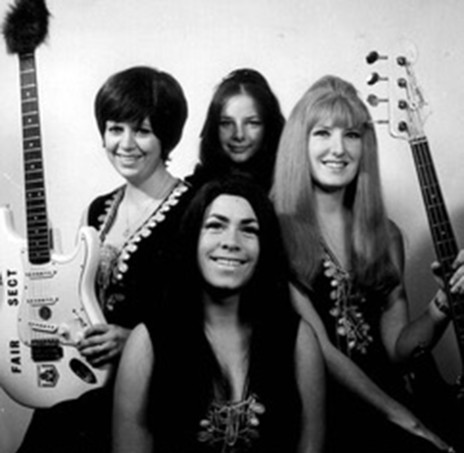
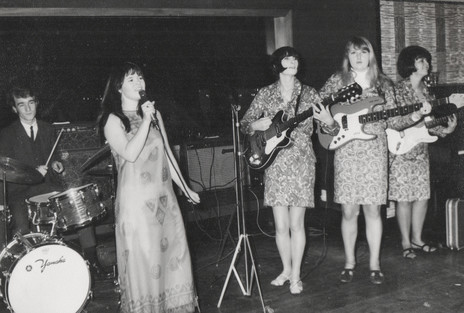
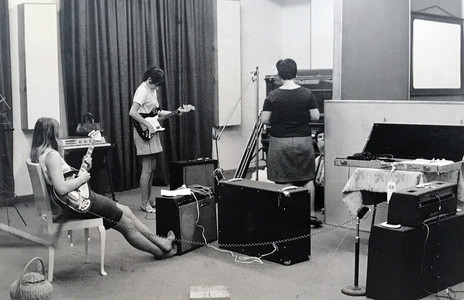
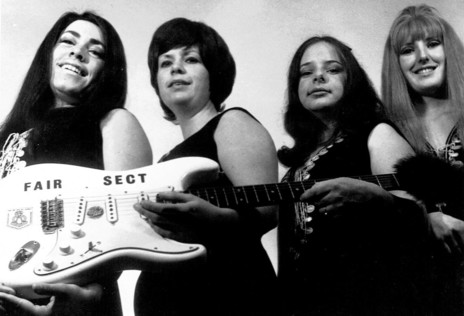
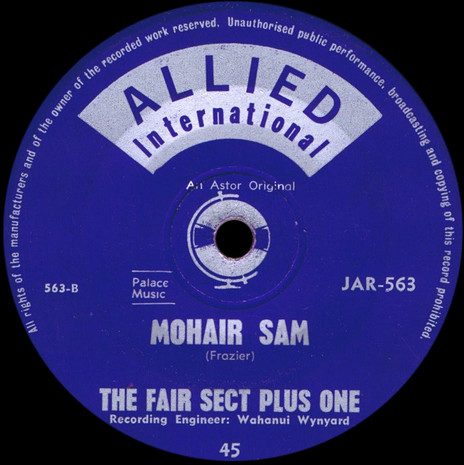
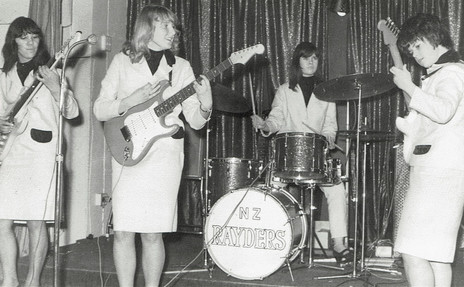
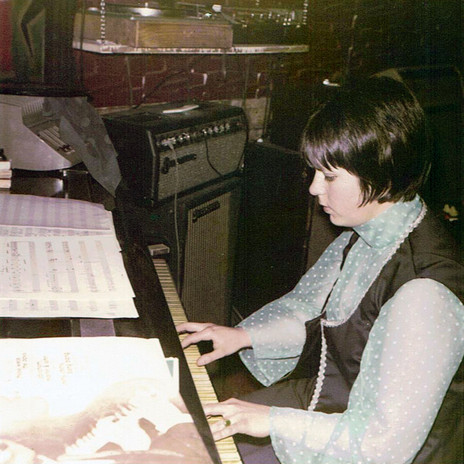
The Chickadees appear to have been the first all-female New Zealand band to perform in public by a matter of weeks, making their debut in 1965. They never recorded and apart from a few local press mentions seem to have stuck to the confines of suburban Christchurch and a few gigs at the popular Laredo Club. The Chickadees’ singer was Canadian and the group included a haka in its act.
Norma Stacey - drums, vocals
Val Tapene - bass, vocals
Linda Williams - guitar, vocals
Faye Reid - guitar, bass, vocals
Yvonne Gray - guitar
Ian McIntosh - drums
Pat Rewai - vocals
Gay Aro - drums
Jenny Parkinson - vocals
Mary Bradfield - vocals
June Littin - keyboards
Visit our sister site
NZ On ScreenMade with funding from
NZ On Air